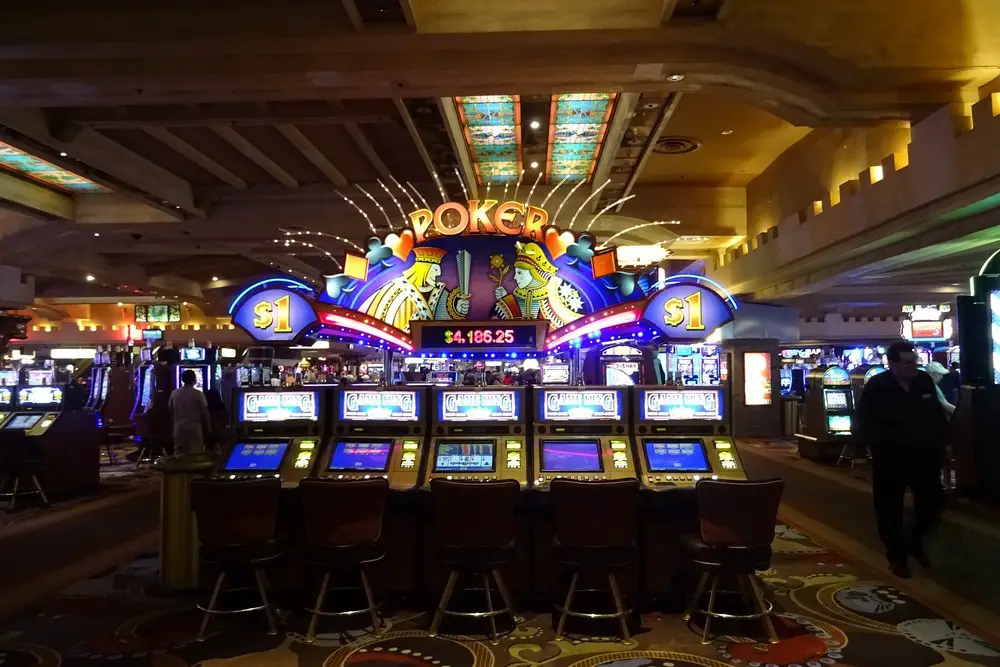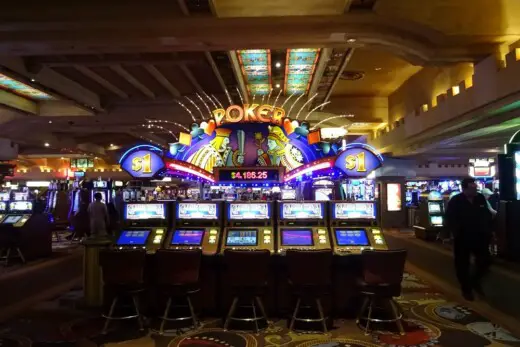Psychology behind casino architecture and design, Gambling resort buildings around the globe, Playground or Friedman layout
The Psychology Behind Casino Architecture and Design
15 Jan 2023
Casinos are home to some of the most outstanding architectural and design marvels that you can find in public spaces. They are meticulously planned, carefully built, and polished to perfection to ensure players like everything they see from the moment they walk through the door.
However, there is much more behind the design of a casino than just creating a place for luck seekers to play. In fact, casinos adopt a specific psychology to ensure that players stay longer and are more likely to return. While this psychology has changed over the years, its aim remains the same.
Keep reading to delve into the different casino designs and how they are used to keep you coming back for more.
The Psychology Behind Casino Architecture – Friedman and Playground Designs
Types of Psychology Designs
Almost every brick-and-mortar casino worldwide follows one of two different design types. These designs are modelled after two types of psychology models: the Friedman Design and the Playground Design.
Both designs have been around for several years and been tried and tested in some of the biggest casinos in the world. Today, they are still the basis for almost all casino designs. That said, Friedman’s method has been declining in the years following the release of the Playground Design.
The Friedman Design
Researched by former gambling addict Bill Friedman, this design was first publicly shared in the ‘90s when Friedman released his book Designing Casinos to Dominate the Competition.
Bill wrote this book while trying to determine the reasons he found going to casinos so addictive himself. Employing what he learned, he helped design many of the biggest casinos on the Las Vegas strip and gave lectures based on his understanding of the psychology behind casinos.
Following this method, casinos use a few key factors to ensure players remain at their games longer and are more likely to return. The essential elements found in this design are outlined below.
Don’t let players know the time
One of the fundamentals of the Friedman design is to ensure players don’t know what time of the day it is. After all, if you don’t know how long you’ve been playing or what time it is, you won’t be in a rush to get home.
Casinos using this design method don’t have windows near the gaming floor or any way to see natural light. Instead, all light is synthetic and carefully calibrated to make you feel at ease without being too dim or too bright. Besides this, no casino has a clock visible anywhere on the gaming floor.
Intricate floor plans and gaming-focused layouts
The next essential part of this design is labyrinthian floor plans that don’t allow easy access to exits. Instead, when trying to leave your machine, you’re more likely to pass plenty of other games that could entice you to try your luck before you get anywhere near a door.
A portion of this design even includes the locations of restrooms. These are generally placed deep within the gaming floor, causing you again to pass many other gambling opportunities before you get to where you are going.
Another focus of this design is making the gaming floor easily accessible from any entrance and the first thing you see as soon as you walk in the door. Therefore, casinos are designed and built to give you almost immediate access to games. The catch is that the deeper you go onto the floor, the harder it will be to find a way out.
A casino’s design and décor should point back to the gaming opportunities
Understanding this concept has led to casinos employing basic décor and simple themes rather than extravagant items that could detract players’ eyes from the gaming machines themselves. Instead, all decorations should only be used as fillers until players see the next machine they want to play.
The Playground Design
First brought forward by designers Roger Thomas and Steve Wynn, the Playground Design thoroughly argued Friedman’s rules. Instead of making players feel trapped within the casino, this psychological concept focuses more on how players feel while playing and emphasises making them feel more comfortable. Being comfortable, in turn, leads to longer playing sessions and repeat visits.
First tested during the 1998 renovation of the Bellagio casino in Las Vegas, the theory proved to work wonderfully and, as such, has become more widely accepted. Due to this, many modern casinos use this design method, and older ones undergoing renovations have also begun to adopt it.
The main principles for this design style are explained below.
Let players experience natural light and open spaces
Gone were the windowless mazes recommended by Friedman. Instead, the Playground Design uses wide open spaces that are easy to navigate and allow players easy access to exits if they want to leave.
Alongside these open layouts are windows and skylights to let natural light in and let the gaming floor feel more relaxed and breezy. These elements have been proven to help players feel more comfortable while playing, making them stay longer and more likely to bet higher.
Décor should be used to make the casino stand out and invite players in
Rather than just being used as a filler for empty spaces, Thomas’s design encourages themed décor that helps a casino establish its brand or theme and makes a memorable impression on players. More than this, it should be used to make players feel at home and comfortable.
Due to this, casinos now place significant time and resources on carefully selecting decorations and ensuring that they appeal to players and even people who may be visiting for other reasons.
Remembering the feeling that these decorations inspired can be used to entice players to return or even to invite non-players to try their hand at gambling.
Online Casino Design
While the above two design methods can be found in many physical casinos, online casinos like those on slotsource.co.uk are more likely to follow the Playground Design. This is mainly because they employ the concept of accessibility, luxury, good organisation, pleasing visual décor, and a wide range of available games to keep players coming back for more.
Furthermore, as online casinos move into the virtual meta world, it is almost certain that they will offer magnificent, jaw-dropping experiences that will rival — if not surpass — anything that currently exists in physical casinos.
Comments on this Psychology behind casino architecture and designarticle are welcome.
Edinburgh Architecture
Comments / photos for the Psychology behind casino architecture and design page welcome





